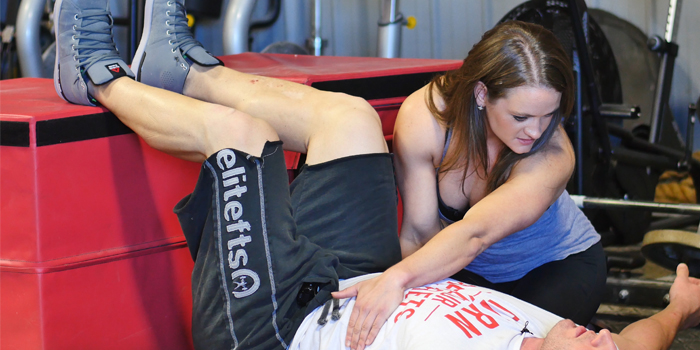
I recently had a conversation with Dave when he said, “How do we take five months of conversations and put them in an interview? It totally changed the way I approach my training." I laughed and Dave laughed (as much as Dave actually laughs audibly).
During his most recent meet prep, there were so many nights we’d go on walks and talk about training: the rehab side of it, the psychological components to injury, the athlete’s self-concept, and how injury plays a role in expectations. As a physical therapist, these thoughts were invaluable to me because, as much as I take my sub-130-pound self with a relatively short training history right up to the limit, there’s no comparison to the guys who are routinely feeling 600 to 700 pounds or more on a weekly basis and have been doing this for more than twice as long.
PART 1: Back to the Platform After Injury: The First Steps
There are so many layers wrapped up into getting back to the platform after injury. We kind of laughed as we sat down to do this, because Dave’s a super structured person and I tend to be a “fly by the seat of my pants” kind of gal.
We hit on most the key points that Dave had to embrace regarding a change in his training if he wanted to keep training for the next 10 years, but there are few key points that bear another highlight:
Dedication to Rehab Work
As we chatted after filming this, Dave brought up a good point. He said that he started doing the weird breathing stuff I actually told him to (almost like there was a purpose to it; I can’t roll my eyes any harder now). He made a huge point that his rehab work was never about just getting it done, but more so about what he could qualitatively feel. This is an absolute game-changer for the way he trains, even now.
Training Changes
As much as he can grind through high reps and high RPE sets, he acknowledges that this was part of what started his injury cycle to begin with. He performed one rep after another of poor positioning and chain-preference, for the sake of replicating how he’d taken previous heavy attempts. He knows that before he touches a heavy bar, he needs to have the same qualitative awareness—which he has with his rehab work—that is purposeful. This is similar to what you feel, whether you know it or not, on a “good day" versus a "bad day." Dave just increased his proprioceptive awareness of it.
Mentality
I’ve written about this a bit. By the time you actually get back to training for a meet, you’ve already gotten through the hardest part of the injury cycle (breaking the mental defeat of pain every time you try to train), unless you are thinking about not being at your very best the first time you get back on the platform.
Embracing the Long-Term
This really meant redefining the long-term. I think given the fact that many lifters have a relatively short training history, a year is a “long” time. Dave articulated to me in a number of ways how his idea of the long-term has been put out to a decade, because that is how long, at a minimum, he wants to continue to be able to train with a powerlifting emphasis. We’re often so itchy to get to our next meet that we forget how long we really can be in this if we want to, and to respect both our bodies and the weight we handle.
PART 2: Back to the Platform After Injury: The Three Main Components of David LaMartina's Rehab
I want to bring up a final point that we didn’t actually touch on: train like you will when you compete if you can, prioritizing bigger training days if you’re traveling. Dave came into this meet after a few major issues on his left side and didn’t get to touch his heaviest token deadlift after an adductor strain on his second attempt at 815. We don’t have a powerlifting gym we train at, just a local fitness center with rubber plates and a few irons that our friend has brought in. Dave completely filled the bar with plates, just slightly taller and wider than competition plates are. This is different than in the past when he’s had competition plates to train on. As his wife, physical therapist, and training partner, I’m kicking myself for not seeing this sooner. The change in range of motion meant that he essentially trained off low mats, and then needed to pull from the floor while fatigued on meet day. With over 800 pounds on the bar, that’s a significant change in demand. These small things matter. It’s unfortunate for those of us that don’t have a fantastic facility to train at, but certainly poses a learning point that things like rack height, whether or not things are crooked, and all the other little things that we don’t think much of, can make a significant difference when that pattern is trained over and over.
Reach out with questions, as always. There’s a lot to take away from watching other people struggle through injury.










